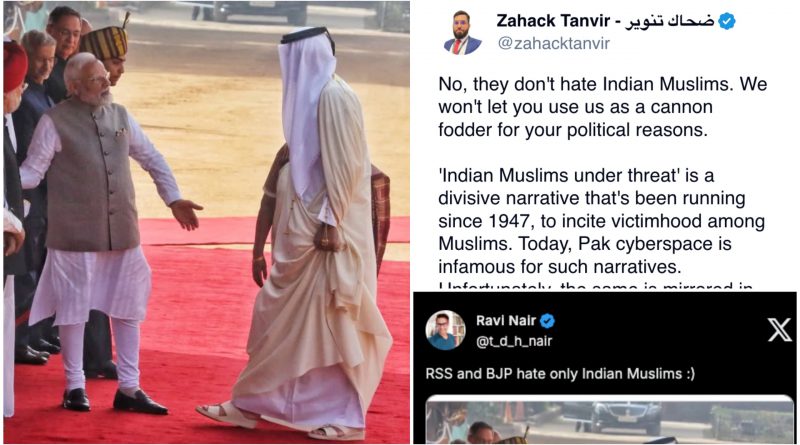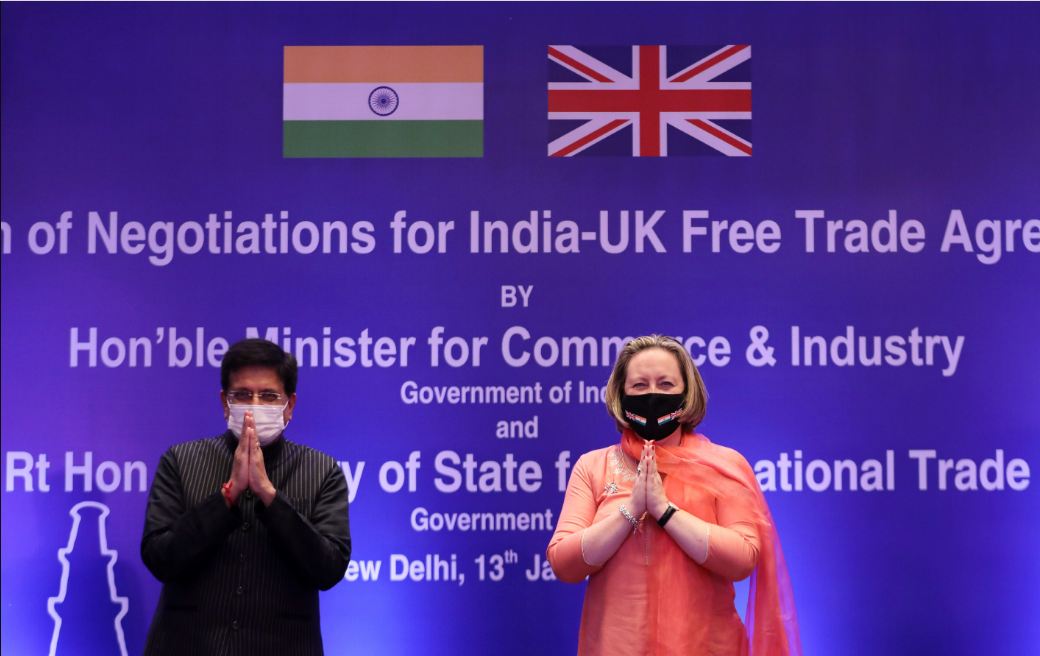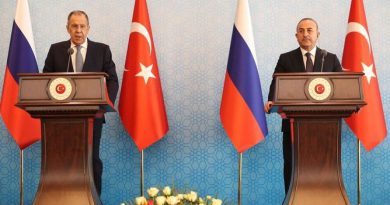‘No, They Don’t Hate Indian Muslims’—Viral Social Media Debate Exposed the Truth
Zahack Tanvir’s viral rebuttal highlights how crucial it is to separate political rhetoric from reality.
A recent debate on X (formerly Twitter) has once again brought the discourse surrounding Indian Muslims into the spotlight. It all started when The Wire journalist Ravi Nair tweeted: “RSS and BJP hate only Indian Muslims :)” alongside a picture of Prime Minister Narendra Modi and Qatar’s Emir, Sheikh Tamim bin Hamad Al Thani.
Peace Activist Zahack Tanvir, Director of the Milli Chronicle, countered this claim, asserting: “No, they don’t hate Indian Muslims. We won’t let you use us as cannon fodder for your political reasons. ‘Indian Muslims under threat’ is a divisive narrative that’s been running since 1947 to incite victimhood among Muslims. Today, Pak cyberspace is infamous for such narratives. Unfortunately, the same is mirrored in India. Indian Muslims are the second largest majority after Hindus in India, and the Indian government does its best to engage and empower them.”
His response quickly gained traction, drawing support from intellectuals, professionals, and social media influencers who echoed his sentiments about Indian Muslims’ progress.
Voices That Joined the Conversation
Sharmistha Sharma, a Kashmiri genocide survivor, remarked, “Glad to have spoken my mind. Indian Muslims are the second-largest majority in India, which narrative paddlers just don’t want to acknowledge.”
Vedvarat Shikarpur, a Times Square-featured writer, stressed the importance of recognizing the propaganda that fuels division, stating, “I hope every Indian Muslim understands this and doesn’t fall for the narrative propagated by Muftis, Owaisis, Zakir Naiks, Afras, and the like. They benefit by instigating Hindu Vs Muslim and diverting youth from development.”
Entrepreneur and start-up consultant Saahil weighed in, “Spot on! The ‘Indian Muslims under threat’ trope is a political tool to keep the victimhood industry alive. India has the second-largest Muslim population in the world, with equal rights, scholarships, and representation in every field. The President, Vice President, Chief Justices, Governors, and Bollywood superstars—hardly signs of ‘oppression.’ Time to ditch the propaganda!”
A verified X-user known as Daily Updates added, “I appreciate your perspective. It’s important to acknowledge that Indian Muslims are indeed a significant part of the country, and efforts for inclusion are crucial for unity.”
Other users supported Tanvir’s stance, including:
Vinod Kumar, veteran Squadron Leader wrote, “This guy is a The Wire fraud journalist and also a communist scumbag. Don’t waste your energy.”
Parikshit Dhume, President of BJP Intellectual Cell, Konkan Division, added, “Commie Ravi doesn’t know where to hide after being shredded to pieces. His old Hindu-Muslim divide tactic has fed the likes of Ravi and his ecosystem, but people have seen through it. The marginalized Muslim has benefited from the Modi regime.”
Vivek Agarwal wrote, “Under the BJP government in the state for 25 years and at the center for 11 years, I see more Muslim enrollments in government schemes, hospitals, gardens, public places, and shopping malls. Everywhere you find people wearing topis and burqas.”
Purvi Dalal remarked, “We need more voices like yours supporting Modiji. It will help take down Leftists, Communists, and divisive politicians.”
Bhavini Makwana, a Certified Ziglar Trainer, added, “You are absolutely right! No Indian hates Muslims. Muslims also know they are safer in India than in any other country. The real issue is radicals who follow violent ideologies!”
Shruti wrote, “India has the third-largest Muslim population in the world, making up 11% of the global Muslim community. If the ruling party and its allies hated Muslims, would this be possible?”
The Reality of Indian Muslim Progress
While political debates continue online, real-world data presents a different picture. Indian Muslims have made significant strides in various fields:
Education: Muslim literacy rates have been rising, with increasing enrollments in universities and technical education. Multiple government scholarships cater specifically to Muslim students.
Economic Growth: A growing number of Muslim entrepreneurs are thriving in industries like IT, textiles, and small-scale businesses. Government initiatives such as Mudra Yojana have provided them with financial backing.
Political Representation: Indian Muslims have occupied top positions in the country, including Presidents (Dr. APJ Abdul Kalam, Dr. Zakir Husain, Fakhruddin Ali Ahmed), Vice Presidents, Chief Justices, Governors, and ministers.
Entertainment and Media: Bollywood icons like Shah Rukh Khan, Salman Khan, and Aamir Khan continue to be some of the most influential figures in Indian cinema.
Cultural and Social Inclusion: Muslims have excelled in sports, literature, academia, and other domains, challenging narratives of marginalization.
While narratives of discrimination against Indian Muslims often dominate certain political and media spaces, the facts tell a different story. Zahack Tanvir’s viral rebuttal highlights how crucial it is to separate political rhetoric from reality. As India progresses, unity, economic development, and social inclusion must take precedence over divisive narratives that serve only political agendas.



